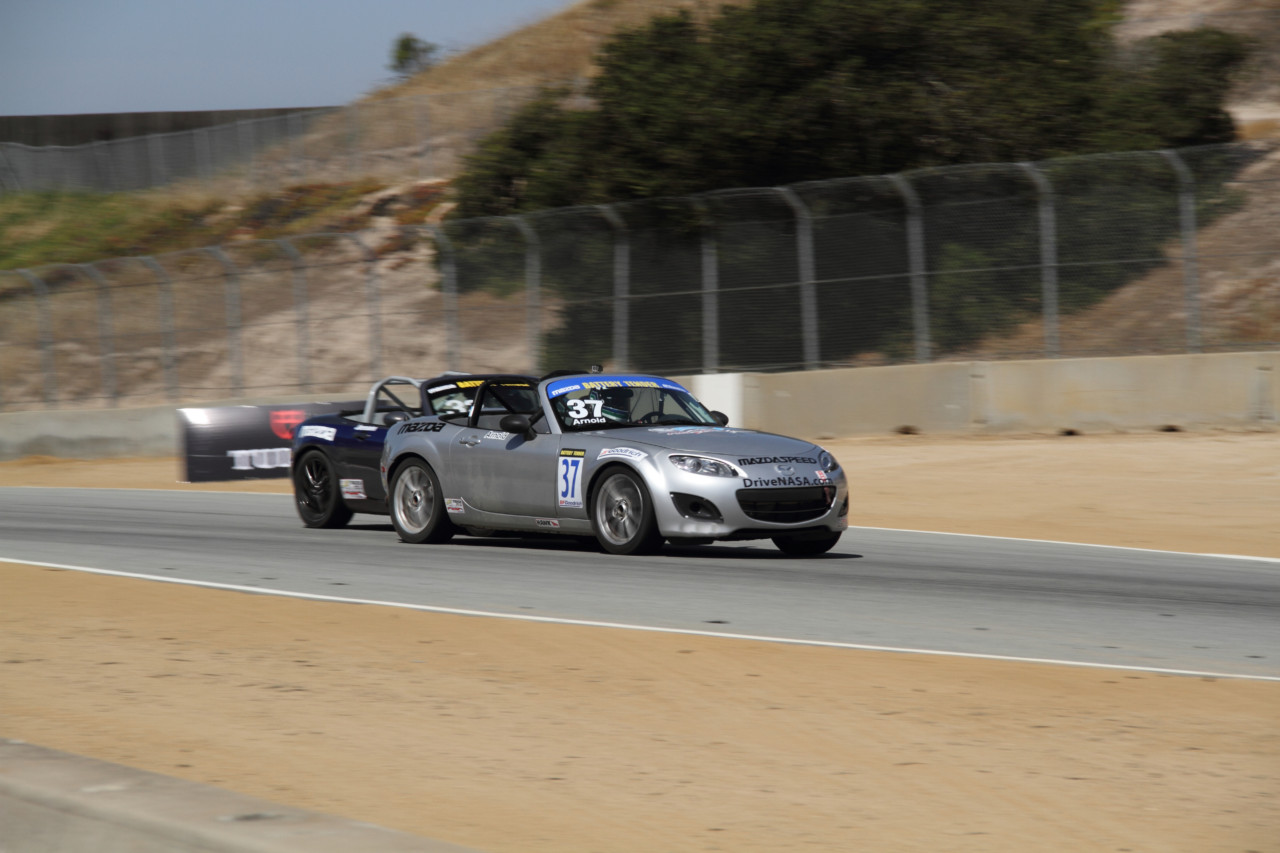
Q: How do I manage traffic while racing for position or trying to catch a competitor?
A: Managing traffic is one of the most challenging and rewarding aspects of racing. The best maintain pace while their competitors struggle. Difficulties arise when cars are running similar pace or when a well-handling momentum car gets held up in corners and then loses ground on the next straight to a slower, higher horsepower car. Strategy and planning leads to cutting through traffic rather than getting held up.
Untrained racers often think that going flat-out as much as possible is the fastest way, and that may be true for qualifying. Yet sometimes it is necessary to ease up and make a gap to maintain momentum through a corner. Similarly, it may not be worth the loss of ground relative to other competitors to challenge for a pass in a low-probability situation. There is a fine line between being aggressive and being smart to maintain pace. Trying to out-brake or go two-wide into a section of track where only one car typically fits is generally a good way to lose pace and lose ground; entering a chicane or a kink with only one driving line are good examples.
Consider Turn 6 at Mazda Raceway Laguna Seca. Drivers typically lift or brake briefly before turn-in and get back on throttle before the apex to maximize speed up the following long, uphill section. When cars enter two-wide, the time lost allows other competitors to pull away or regain ground. A passing driver may challenge for a pass between Turn 5 and Turn 6, and then it becomes a choice for both drivers to decide what happens next. If the passer cannot get level with the other car, it is generally best to back off and go through single-file. On the other hand, the car being passed may do better to back off well before the corner and allow the passing driver to move back to the optimal line so that both maintain pace through the corner. Alternately, the passed car may become the passer on the following straight if he can drive the optimal line while forcing the other driver to compromise his line at turn-in.
This one example can be experienced at many tracks across the country. The bottom line is that cars that are caught in traffic or even battling for position have a choice to either cooperate or fight for space on the track. Cooperation allows drivers to maintain maximum pace whereas fighting for the line can lead to losing ground with respect to other competitors. When battling for the lead, all bets may be off. Choose wisely!
Joshua Allan is a driving coach living in California. A mechanical engineer, Allan has worked in the design offices of Ferrari’s Formula 1 team and has been a vehicle development test driver for Maserati in Italy. He is a five-time champion in a PTD Mazda MX-5 with Robert Davis Racing. Learn more at RacerMentor.com